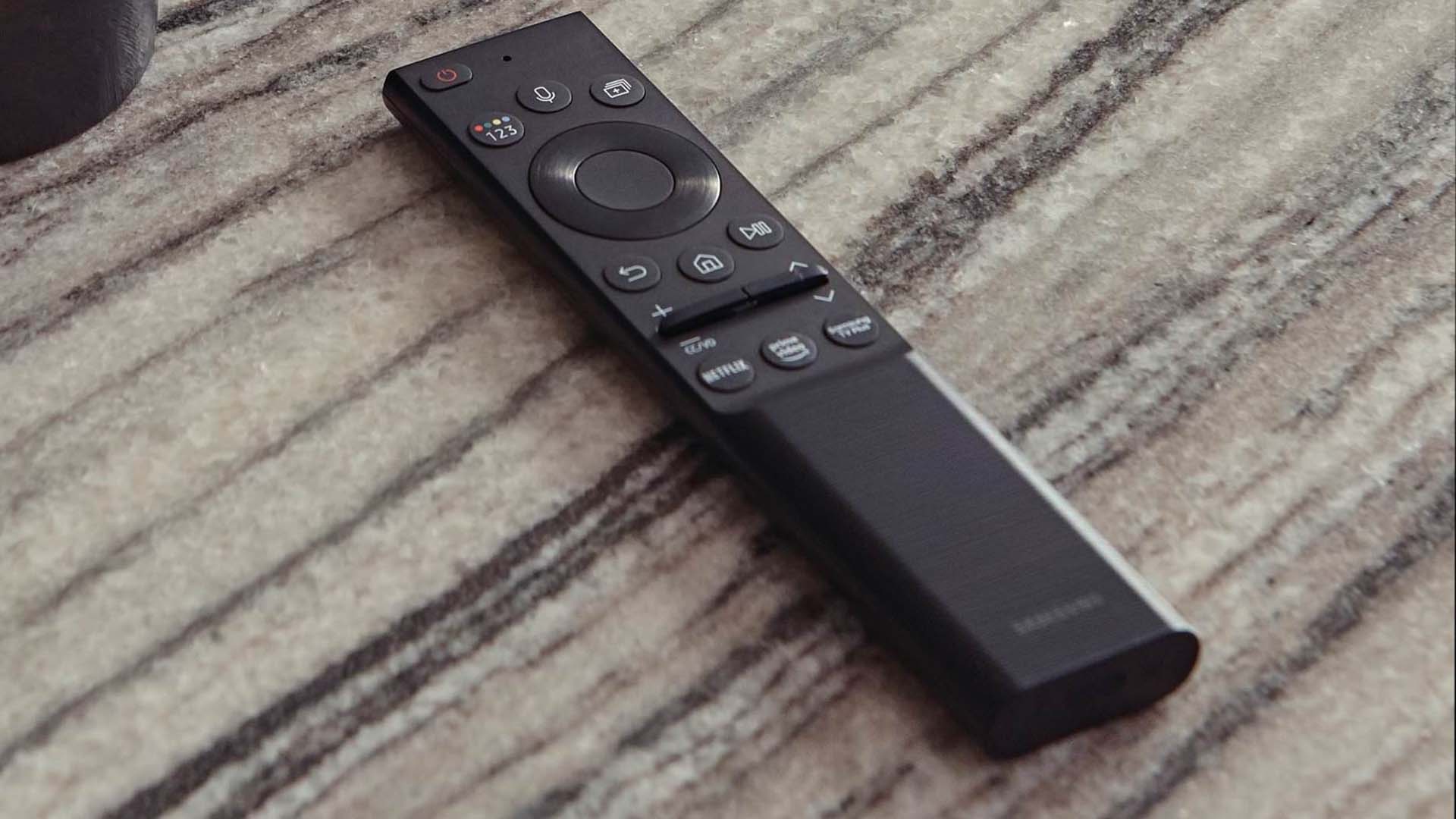
It's 'just' a TV remote control, but Samsung's SolarCell Remote makes ingenious use of your router's wifi signals to charge itself.
The new remote, which comes with the latest Neo QLED televisions uses RF Energy Harvesting to use the 2.4GHz signals from your wifi router to keep it topped up and charged at all times. Turn the remote onto its front and solar panels on the back can also use ambient light energy (including from your indoor lights) to give even more charge.
According to Samsung, the device doesn't contain any batteries in the conventional sense, but instead uses a capacitor. This means that you should, theoretically, never have to be concerned about remote charge ever again.
RF harvesting is not a new concept, but so far, to our knowledge, it hasn't been employed in any consumer devices or gadgets. Because the tech is only really suited to ultra-low energy devices its application is rather limited. For example, don't expect to see a self-charging camera any time soon. But perhaps with much lower powered gadgets such as simple wireless earbuds, there could be some possibilities for removing the charging dance when combined with supplementary methods such as ambient light harvesting.
Although with that said, scientists have made a self powered camera sensor by making it do double duty as a photovoltaic cell, and researchers at the School of Computer Science and Engineering University of Washington, Seattle have also made a self powered, battery free streaming camera that uses both solar and RF energy harvesting.
The University of Washington camera could only manage between 1-9fps depending on ambient light, and it is extremely low resolution, however research is ongoing. As the researchers point out, if they can solve the issues of being able to develop enough power to send the raw signal wirelessly for decoding, it opens the possibility of security cameras that never need to be hard wired in, making it easier to cover areas that might be missed otherwise.
The entire world of efficient, charger free, energy generation is an intriguing one, because there are lots of different ways energy can be generated. And while you might not be seeing a self-powered Sony FX10, there are lots more, much smaller, more ingenious ways these new methods can be employed, doing a small part to help save the environment in the process.


Comments